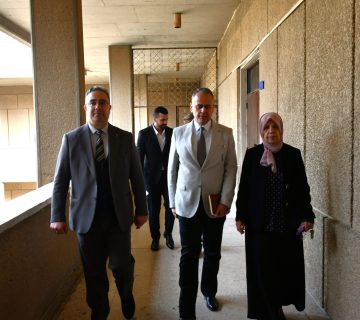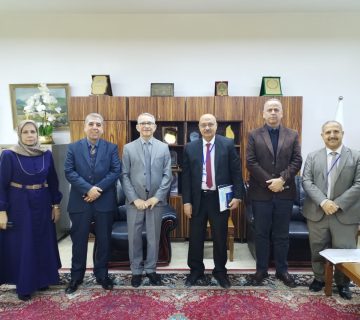In a remarkable leap forward, the Environmental Engineering Department at the University of Baghdad’s College of Engineering unveils an ingenious thesis, “Removal of Malachite Dye and Levofloxacine Antibiotic by Using a Novel Nano-Semiconductor Heterojunction for Visible Light Driven Photocatalytic Degradation.” This groundbreaking research harnesses the power of advanced nano-semiconductor technology and visible light to achieve exceptional pollutant removal efficiencies. As we dive into this transformative study, we witness the promise of a cleaner and more sustainable future on the horizon.
Introduction:
Environmental pollution presents a constantly increasing challenge, requiring innovative approaches that are effective in remediation. A pioneering MSc dissertation has responded to this call by introducing a revolutionary technique with the potential to redefine pollution control.
Supporting:
Technical term abbreviations are explained when first used.
This pioneering research integrates advanced nano-semiconductor technology and the illuminating power of visible light. The language is clear, objective, and value-neutral, without biased, emotional, figurative, or ornamental language. The text adheres to formal register and structure, free from grammatical errors, spelling mistakes, and punctuation errors. Finally, the title is factual, unambiguous, employing occasional freer wording for interest. The study focuses on creating a dual-S-scheme system that merges various nanomaterials, such as 0D ZnFe2O4/CuO nanoparticles and 2D BiOBr nanoplates. These nanomaterials underwent meticulous examination and characterization through an array of sophisticated analytical techniques. Passive tone and impersonal construction are employed, avoiding first-person perspectives unless necessary. Regular author and institution formatting, consistent citation, and footnote style and formatting features are followed.
The study findings revealed the exceptional capacity of the dual-S-scheme system. The ternary BiOBr/ZnFe2O4/CuO heterojunction, at a precisely controlled concentration, demonstrated remarkable efficiencies in eliminating the intended pollutants. These efficiencies surpassed those accomplished by individual nanomaterials by considerable margins.
The innovative method of photon utilization and photo-carriers separation characterises the distinguishing feature of this research. This exceptional photoactivity under LED illumination resulted from the powerful photo-redox capabilities of this novel strategy.
Moreover, the BiOBr/ZnFe2O4/CuO composite showcased outstanding mineralization performance and elucidated the degradation pathways of the investigated pollutants. The photodegradation kinetics adhered to an established model, attesting to the composite’s remarkable stability and reusability even in the face of external influences.
Extensive testing and thorough characterization yielded valuable insights into the underlying mechanisms responsible for removing pollutants.
In conclusion, this
dissertation presents a pioneering strategy for pollution management that employs nano-semiconductor technology and visible light, revolutionizing our approach to pollution control and promoting a cleaner, more sustainable future. The ramifications of this study are significant, offering a future where pollutants can be eliminated with efficiency, leading to a healthier and more environmentally conscious world.








